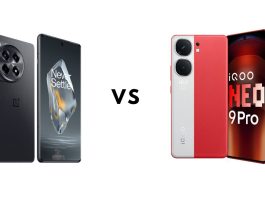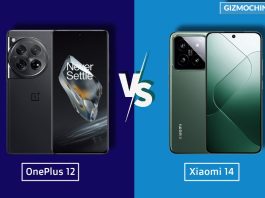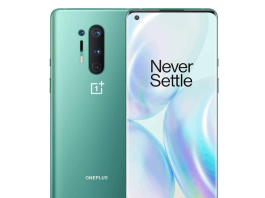It was erroneously stated in the first published version of this post that the OnePlus 8 Pro will be the first smartphone with MEMC technology. The post has now been corrected.
When it comes to smartphones, one major feature that is compared across brands is the camera performance. However, lately, another area where manufacturers are trying to outdo each other is in the display department. From a shift from LCDs to AMOLED panels; to special chips that upscale SDR to HDR; and to screens with high refresh rates – the display of a phone is now more important than ever.
The upcoming OnePlus 8 Pro will have a 120Hz refresh rate just like the Galaxy S20 series and the OPPO Find X2. This refresh rate is even higher than that of the OnePlus 7 Pro which has a 90Hz refresh rate.
While a display with a higher refresh rate brings a whole new experience to users, there is not a lot of content out there that takes advantage of this new feature on your phone as most videos you watch play at 24 fps or 30fps. To solve this problem of lack of content, OnePlus has come up with a solution, albeit not a unique one.
MEMC (Motion Estimation, Motion Compensation)
MEMC is a feature found in a lot of TVs and is infamously called the “Soap opera effect” because of the way it makes what you are watching look like a soap opera. On some TVs, it is called motion smoothing, and how it works is by artificially adding frames to a video with a low frame rate so that it has a higher frame rate and gives it that smooth effect. The video below shows the feature in action.
As you can see, the clips shown in the video above when the feature is turned on play much smoother than when the feature is turned off. However, when playback is set to slow motion, you can see the level of detail is low when MEMC is on.
However, it has its disadvantages and a lot of movie directors are against watching a movie with the feature turned on.
EDITOR’S PICK: Netflix HDR Playback now available on Pixel 4, OnePlus 7T, and Oppo Find X2 series
MEMC in phones
Back in January, Pete Lau, CEO and founder of OnePlus, revealed that they have created a custom MEMC chip that can “push ordinary 30fps video to 120fps, so the video takes advantage of our 120Hz Fluid Display”.
If you’ve seen high-quality TVs, you’re no stranger to MEMC. We’ve created a custom MEMC chip that can push ordinary 30fps video up to 120, so any video gets the full advantage of our 120Hz Fluid Display. pic.twitter.com/YPD3fw5uOn
— Pete Lau (@PeteLau) January 16, 2020
Since we know the OnePlus 8 Pro is the one with a 120Hz Fluid Display, it will come with the MEMC chip. The OnePlus 8 has a 90Hz display and most likely won’t have the chip.
The OnePlus 8 isn’t the first phone to have a MEMC chip. Black Shark introduced it to phones back in 2018 and its Black Shark 3 flagship has a new version called MEMC 2.0. The OPPO Find X2 Pro also has a similar chip but called the “O1 Ultra Vision Engine” which has a feature called Motion Clear that upscale 30fps content to 60fps or 120fps.
Prior to the release of the aforementioned phones, MediaTek processors released as far back as 2015 (for example, the Helio X10) have come with a feature called Clear Motion that does the same job as a MEMC chip.
Today's MiraVision feature: ClearMotion™ clears things up -converting 24/30 frames-per-second videos to 60 or even 120fps! 🎦 #MediaTek pic.twitter.com/xZrqcY7tQl
— MediaTek (@MediaTek) October 3, 2016
OnePlus’s MEMC chip will use what it calls High Frame 2.0 to convert content from a lower frame rate to a higher frame rate. The manufacturer even released a list of apps that are supported and it includes YouTube, Netflix, Hotstar, MXPlayer, VLC, Prime Video, and even the Gallery app on your phone.

OnePlus is not limiting the feature to just video players and streaming apps but also includes games such as Vain Glory. At launch, the feature will work with a total of 12 video players and streaming apps and 12 games. More apps and games are expected to be added in the future.
Disadvantages of MEMC in phones
The major and only disadvantage we believe it will bring is a reduction in battery life. Just as using your phone at the highest refresh rate will affect battery life, High Frame 2.0 is also expected to further drain your battery faster.
OnePlus has not yet said anything about it yet and may have actually found a way to minimize battery drain, but nevertheless, it will still be there. However, we expect there will be a way to turn off the feature to conserve battery or if you do not like it in the first place.
Will more manufacturers follow in OnePlus’ footsteps?
Most likely. If the feature is well received, we may see more phones with high refresh rates come with a similar or improved feature. A lot more people consume content on their phones from movies to TV shows and even sports games which actually benefit most from motion smoothing. So this looks like a feature that may become standard in flagship phones in a year or two.
What do you think about MEMC on phones, Yay or Nay?
UP NEXT: Leak reveals the OnePlus 8 Pro has an IP68 certification



